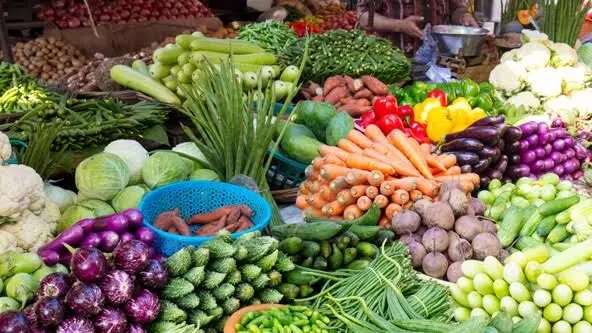Bhindi @ ₹80 per kilo: Vegetable prices go through the roof in India
Heavy rains during August and September damaged crops in key agricultural regions
By Anoushka Caroline Williams
Bhindi @ ₹80 per kilo: Vegetable prices go through the roof in India
Hyderabad: From onions to tomatoes, prices of vegetables have gone through the roof in India.
Experts point to a mix of supply chain disruptions, erratic weather patterns, and policy decisions as key factors driving this trend.
Supply Chain Challenges and Weather Disruptions
The primary driver of high prices is an imbalance in supply, largely caused by erratic weather. Heavy rains during August and September damaged crops in key agricultural regions, such as Karnataka and Andhra Pradesh, reducing overall production.
“Weather events have impacted the yield and quality of vegetables this year. Late rains disrupted harvest cycles, particularly for tomatoes and onions, leading to supply shortages,” said Rudra Mahajan, an agricultural economist.
The National Statistics Office (NSO) reported a 28% drop in mandi arrivals over the past two months, further straining availability and pushing prices up.
Costliest Winter Vegetables in Years
While winter typically sees a surplus in vegetables like peas, carrots, and cabbage, this year has been different. Tomato prices surged by 161% year-on-year (YoY), while onion prices rose by 52%. Bhindi (okra) is being sold at ₹80 per kilogram, and few vegetables are priced below ₹40 per kilogram.
“Traditionally, winter brings lower prices due to increased availability, but this year, the supply chain hasn’t been able to recover from earlier disruptions,” said Sharon Kumar, a supply chain analyst.
Policy Impacts and Inflationary Pressures
Experts also attribute the price surge to policy decisions, including revised import duties on edible oils. The government recently increased duties on crude and refined soybean, palm, and sunflower oils, indirectly contributing to higher food inflation.
“A lack of efficient storage and distribution infrastructure has worsened the situation. Perishables like vegetables rely on a seamless supply chain, which remains underdeveloped in many regions,” noted Mahajan.
India’s food inflation surged to 10.87% in October 2024, with vegetable prices accounting for a significant share. The overall retail inflation breached the Reserve Bank of India’s tolerance band, rising to 6.2% in the same month.
What Lies Ahead?
Economists are cautiously optimistic about a seasonal price correction in the coming months. The progress of the rabi sowing season and a better kharif harvest are expected to stabilize prices.
“By December or early January, we may see a reduction in vegetable prices if there are no further weather disruptions. However, structural issues like weak storage infrastructure need long-term attention,” said Divyanka Sharma, an economist.
“Until then, households with continue to feel the pinch of elevated vegetable prices, with many prioritizing essential purchases over discretionary spending” concluded Sharma.